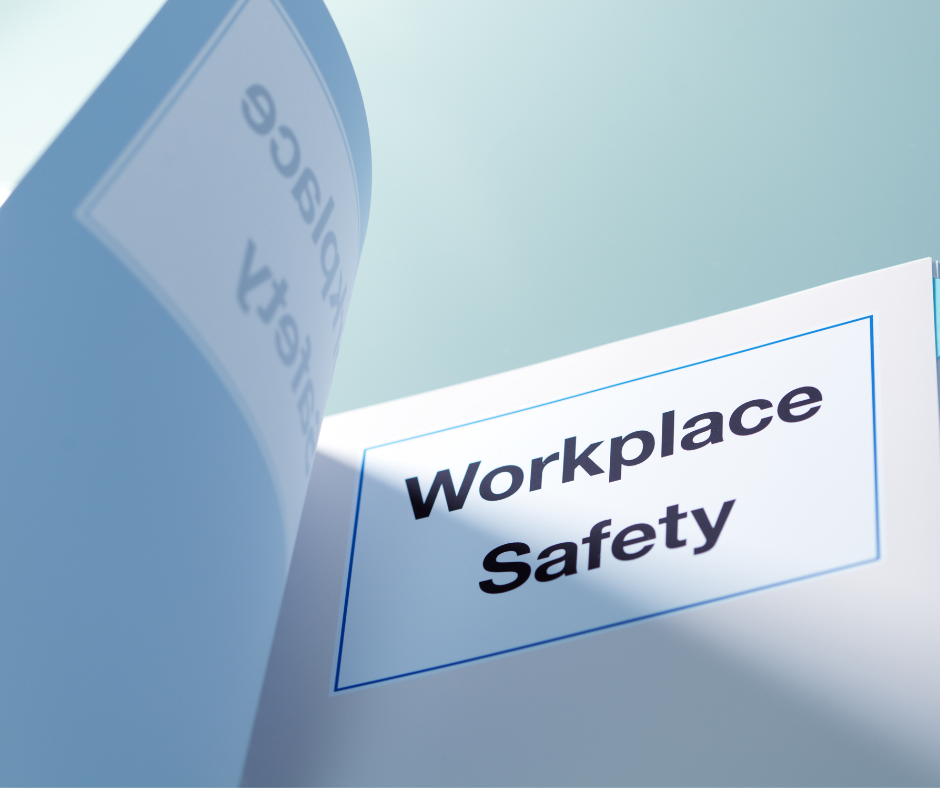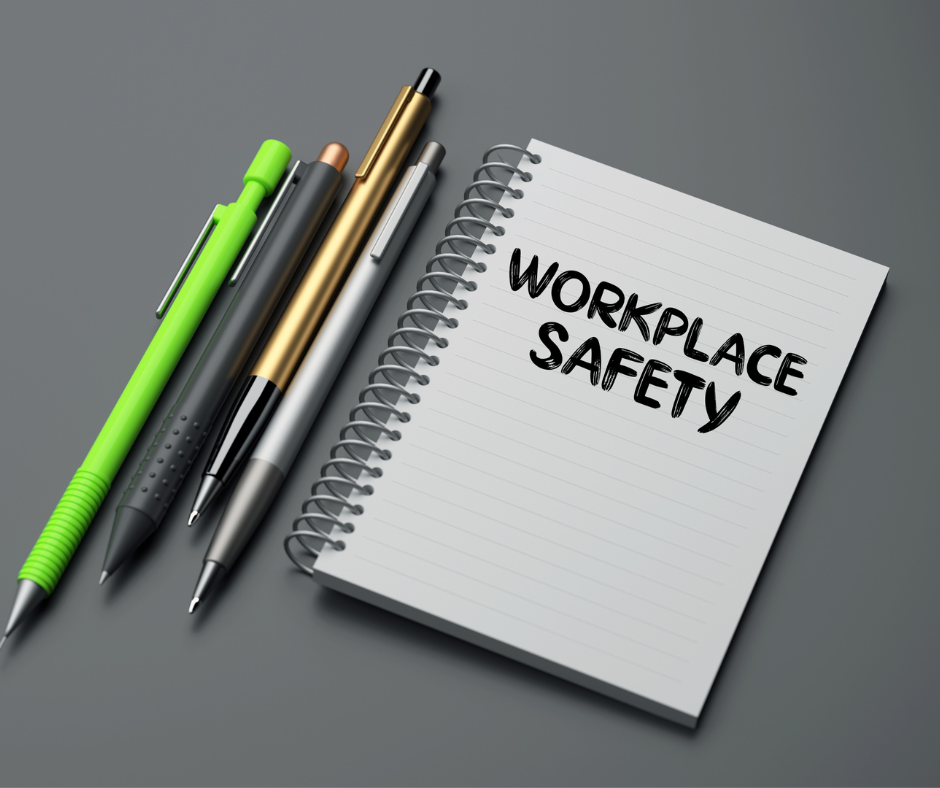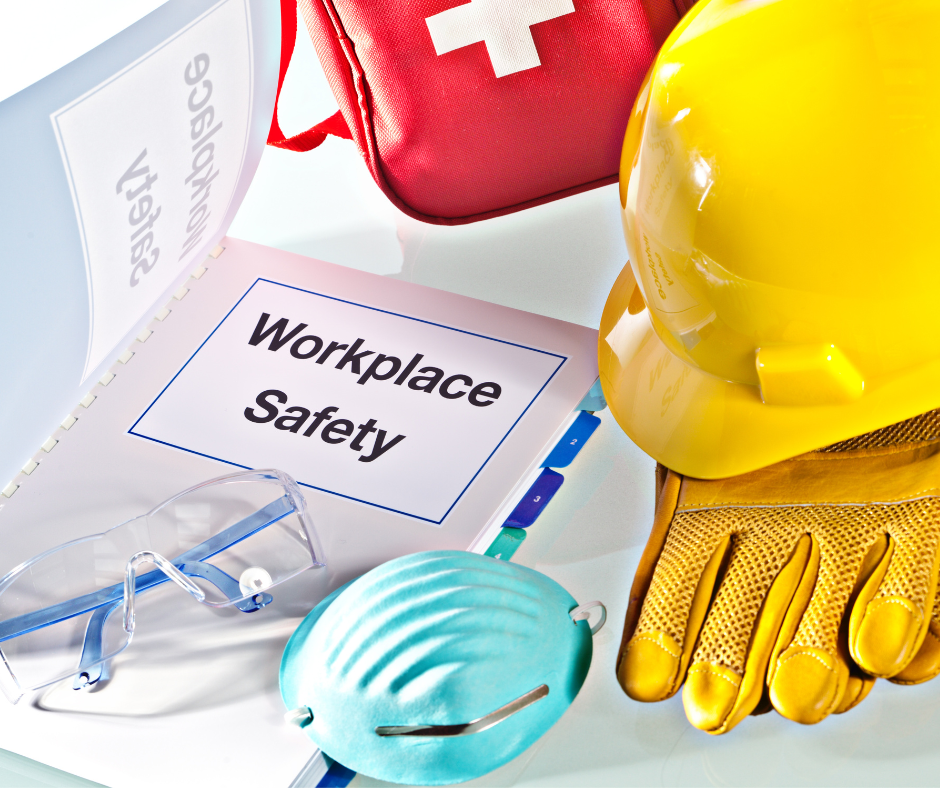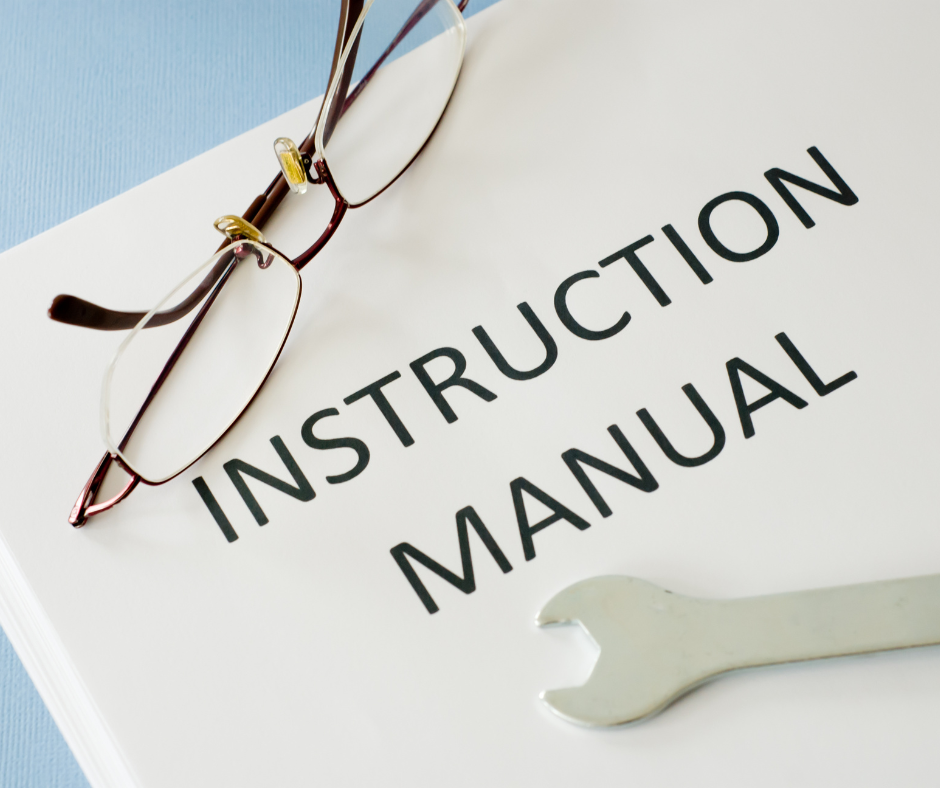
Key Takeaway:
- Employee handbooks are critical for manufacturing companies, including those that specialize in electrical equipment, appliance, and component manufacturing, to ensure safety and compliance in the workplace. They provide company policies, procedures, and guidelines for safe practices and behavior, including electrical safety, safe handling of equipment and components, attendance and punctuality, and performance expectations and disciplinary actions. Learn more about creating effective employee handbooks for manufacturing companies.
- Effective employee handbooks for health and personal care stores companies must be regularly updated and communicated with employees to remain relevant and effective. Updating handbooks can improve safety standards, communication, and employee engagement. Communication is crucial to ensure employees understand and follow company policies, procedures, and guidelines.
- Careful consideration should be given to policies and procedures outlined in employee handbooks. Effective employee handbooks should adhere to all relevant regulations and guidelines, be clear and concise, and be accessible to all employees.
Are you a manager working in the electrical component manufacturing industry? Equip yourself with the knowledge and resources needed to create a comprehensive employee handbook for your company and ensure sound employee-employer relations.

Importance of Employee Handbooks in Electrical Equipment, Appliance, and Component Manufacturing Companies
In the highly-regulated electrical equipment, appliance, and component manufacturing industry, Employee Handbooks are indispensable. They provide important guidelines and policies for employees to follow, and they help to ensure that the workplace is safe and compliant with laws and regulations. Employee Handbooks for Electronics and Appliance Stores Companies also promote consistency in employee conduct and foster a positive company culture. With an up-to-date and comprehensive Employee Handbook, businesses can effectively manage their staff and minimize the risk of legal disputes or employee grievances. Remember to review and update your Employee Handbook regularly to reflect current policies and laws and to guarantee that it remains relevant to your employees’ needs.
Pro Tip: Consider hiring a qualified lawyer to review your Employee Handbook to ensure that it is legally sound and effective.

Contents of an Effective Employee Handbook
For your electrical equipment, appliance and component manufacturing company, an effective employee handbook is a must! Include sections on electrical safety, safe handling of equipment and components, attendance and punctuality policies, performance expectations, disciplinary actions and benefits and compensation. These subsections have solutions to many employee-related worries.
Policies and Procedures for Electrical Safety
Electrical safety is crucial in the workplace. Employers should ensure their employees are aware of the potential hazards and implement procedures to mitigate risks. This includes regular equipment maintenance, proper grounding techniques, personal protective equipment requirements, and training programs on safe electrical practices. Additionally, the company should assign a qualified person to oversee electrical safety measures.
Pro Tip: Regularly review and update your electrical safety policies to stay up-to-date with changing regulations and technology advancements. Remember, safety first, because getting electrocuted in the workplace is not a shocking new experience.
Guidelines for Safe Handling of Equipment and Components
Safe handling of electrical equipment in workplaces requires a keen adherence to established guidelines. It is vital to ensure that employees have access to comprehensive information on how to handle different components of electrical equipment safely.
- Step 1: Equip your staff members with protective gear, including gloves, helmets, and goggles, when handling equipment and components.
- Step 2: Ensure that regular maintenance is carried out on all electronic tools and record the dates of maintenance in a logbook.
- Step 3: Provide training sessions for new employees and refresher courses for existing staff regarding the safe handling of electronics tools. It is important for companies in the electronics and appliance stores industry to have employee handbooks that outline safety protocols and best practices when handling electrical equipment and components.
- Step 4: Implement strict rules around identified hazards such as wet floors or uncovered electrical wires to mitigate potential accidents.
Providing adequate training programs can reduce accidents at your workplace drastically. In addition, it is essential to keep updating safe-handling guidelines frequently and make them easily accessible.
To create a safer workplace environment, it is critical always to stay up-to-date with the safety requirements in the electrical equipment manufacturing industry. Failure to do so may attract harsh penalties from regulating agencies or unforeseen legal implications that could impact your business in untold ways.
Arriving fashionably late is only acceptable if you work in a fashion industry, not in an electrical equipment manufacturing company with strict attendance policies.
Attendance and Punctuality Policies
Employers prioritize punctual and prompt workers. Consequently, companies require policies that align with the same. Ensuring an efficient attendance and punctuality policy forms an integral part of Electrical Equipment, Appliance, and Component Manufacturing Employee Handbooks. Such policies spell out expectations for employees in terms of attendance and punctuality, and the consequences of noncompliance.
These policies should state guidelines on how employees should give notice to management before planned absences or lateness. A well-crafted attendance policy must outline both paid time off (PTO) as well as unpaid absenteeism rules. Furthermore, the reasons for leave may be specified to lawful reasons such as jury duty or military service. It’s essential also to include processes that account for unforeseeable absences like sudden illness or medical emergencies.
A further addition could require managers or the Human Resources department to audit or monitor employee attendance patterns regularly to ensure compliance with such policies effectively. Properly crafted standards will secure both managers’ rights and mitigate potential discrimination claims. Pro Tip: Regular training or employee workshops on such policies and their updates can increase awareness and foster responsibility among team members while minimizing legal risks for businesses inevitably arising from absenteeism issues. Better watch your conduct or you’ll be shocking yourself with the disciplinary actions outlined in this section.
Performance Expectations and Disciplinary Actions
Meeting the expected job performance standards is mandatory for all employees. Similarly, it is essential to maintain a disciplinary code of conduct in cases where an employee violates such norms. This part of the employee handbook outlines the performance expectations and procedures for addressing non-compliance.
The company expects its employees to perform their tasks with accuracy and precision while adhering to ethical work practices. Any deviation from these standards can result in disciplinary actions such as warnings, suspension, termination or legal action based on the severity of violation. The consequences of non-compliance are clearly communicated to all employees through this section of the handbook.
Apart from defining performance expectations and disciplinary actions, this section covers aspects related to evaluating performance. These include methods used for assessing job proficiency such as feedback sessions, periodic appraisals, etc. Once a new hire failed to follow safety guidelines and caused damage to a piece of expensive equipment. Since he was aware that adherence to safety protocols was mandatory before using them, he was severely reprimanded by management according to the rules highlighted in the Employee Handbook for construction companies. If money can’t buy happiness, at least it can buy some clarity on vacation days and health insurance options – check out the benefits and compensation section!
Benefits and Compensation Information
When it comes to the complete information related to the total rewards an employee can expect from their workplace, we must cover a variety of benefits and compensation programs. These programs serve as a crucial component of employee satisfaction and contribution to organizational success.
- Employment status eligibility criteria
- Types of health, insurance and wellness plans available
- Compensation structure breakdown (Salary, Bonuses and Perks)
- Paid leave policies for holidays, sick days and vacation days
If your company provides comprehensive coverage in terms of benefits and compensation packages, employees will be more motivated to perform well and remain committed to their role. Employee handbooks are essential for merchant wholesalers, durable goods companies and those in electrical equipment, appliance, and component manufacturing industries.
In addition to these standard policies and practices mentioned earlier, we would also like to highlight that effective employee handbooks for goods-producing industries must consist of unique details on other matters such as Professional Development opportunities, Employee Engagement Programs like Book Clubs/Employee resource groups/Mentoring programs in order to enhance physical, mental well-being along with values aimed at enriching the overall workplace culture.
Are your employees fully aware of every benefit they have access to? Keep your staff informed by providing them with a detailed handbook. Don’t miss out on offering these packages which could lead to reduced retention rates or limited interest from future employees.
Keep your employees informed, or they’ll start spreading rumors like a faulty wire sparking a fire.

Importance of Regular Updates and Communication with Employees
Employee handbooks play a crucial role in ensuring workplace safety, productivity, and compliance with regulations. Regular updates and effective communication with employees are essential to maintain a functional and relevant handbook. This not only keeps employees informed but also helps to mitigate potential risks and liabilities.
Providing regular updates to employees ensures that they are informed of any changes in policies, procedures, or regulations that may impact their work. Effective communication ensures that employees understand the handbook’s contents and are aware of their rights, responsibilities, and expectations. This can help to improve workplace compliance and productivity, as well as reduce potential risks and liabilities.
To maintain a functional and relevant handbook, updates should be made as needed. This includes changes in regulations, policies, or procedures, or any incidents that may require new guidelines or protocols. Furthermore, it is important to ensure that the handbook reflects the company’s values and culture.
Incorporating regular updates and effective communication with employees is crucial to ensure a productive and compliant workplace. Failure to do so can lead to potential risks and liabilities that may harm the company’s reputation and bottom line. As such, it is essential for companies in the electrical equipment, appliance, and component manufacturing industries to prioritize employee handbooks.
Five Facts About Employee Handbooks for Electrical Equipment, Appliance, and Component Manufacturing Companies:
- Employee handbooks in the repair and maintenance industry typically cover safety measures and compliance with industry standards, such as OSHA regulations. For more information on creating effective employee handbooks, check out this article on employee handbooks for repair and maintenance companies from HR Daily Advisor.
- These handbooks often also address employee conduct, disciplinary actions, and benefits packages. (Source: HR Technologist)
\nFor companies in the personal and laundry services industry, it’s important to have clear policies and guidelines in place to ensure smooth operations. Creating comprehensive employee handbooks can help achieve this goal.
- Employee handbooks in the electrical equipment, appliance, and component manufacturing industry should be regularly updated to reflect changes in safety standards and regulations. (Source: LegalZoom)
It is also important for apparel manufacturing companies to keep their employee handbooks up-to-date with safety regulations.
- It is important for employers to communicate the contents of the handbook clearly to employees to ensure compliance and avoid misunderstandings. (Source: SHRM)
For companies in the electrical equipment, appliance, and component manufacturing industry, it’s crucial to have employee handbooks that outline safety procedures and protocols specific to their industry.
- An effective employee handbook can help protect employers from legal disputes and employee grievances. (Source: Workforce)
FAQs about Employee Handbooks For Electrical Equipment, Appliance, And Component Manufacturing Companies
What is an Employee Handbook for Electrical Equipment, Appliance, and Component Manufacturing Companies?
An employee handbook for electrical equipment, appliance, and component manufacturing companies is a comprehensive manual that outlines the company policies, rules, and regulations that employees are expected to follow. It also includes information about the company’s mission, values, and culture, as well as any benefits and compensation that employees may be eligible for.
Why is an Employee Handbook important for Electrical Equipment, Appliance, and Component Manufacturing Companies?
An employee handbook for electrical equipment, appliance, and component manufacturing companies because it provides a clear and concise guide for employees to follow. It can help ensure that all employees are aware of the company’s policies and procedures and can help prevent misunderstandings, disputes, and legal issues.
What should be included in an Employee Handbook for Electrical Equipment, Appliance, and Component Manufacturing Companies?
An employee handbook for electrical equipment, appliance, and component manufacturing companies should include information about the company’s policies, procedures, and expectations for employees. It should also include information about employee benefits and compensation, as well as any rules or regulations that are specific to the manufacturing industry.
How often should an Employee Handbook for Electrical Equipment, Appliance, and Component Manufacturing Companies be updated?
An employee handbook for electrical equipment, appliance, and component manufacturing companies should be updated periodically to reflect any changes in company policies or procedures, as well as any new laws or regulations that may affect the industry. It is recommended that the handbook be reviewed and updated at least once a year.
What should employees do if they have questions about the Employee Handbook for Electrical Equipment, Appliance, and Component Manufacturing Companies?
If an employee has questions about the employee handbook for electrical equipment, appliance, and component manufacturing companies, they should first consult the handbook itself. If their question is not answered in the handbook, they should speak with their supervisor or HR representative.
Can an Employee Handbook for Electrical Equipment, Appliance, and Component Manufacturing Companies be customized for a specific company?
Yes. An employee handbook for electrical equipment, appliance, and component manufacturing companies can and should be customized for each specific company. This allows for the handbook to reflect the specific policies, procedures, and expectations for that company, and helps ensure that employees are aware of the unique aspects of their workplace.